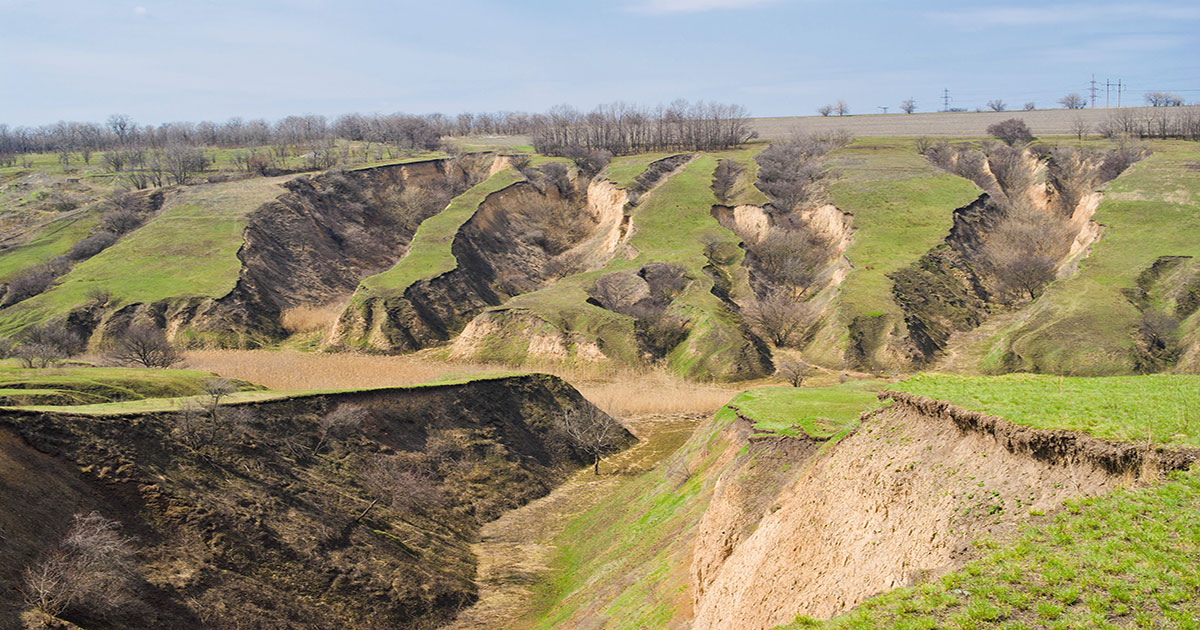What do we mean by Soil Erosion?
Definition:
Soil erosion is the process by which soil, which is the top layer of Earth's surface that supports plant growth and sustains many ecosystems, is removed or displaced by natural forces such as wind, water, ice, and human activities. It is a natural geological process, but it can become a significant environmental issue when it occurs at an accelerated or unsustainable rate, leading to soil degradation and loss of fertile land.
Several factors contribute to soil erosion:
Water Erosion: This is the most common type of soil erosion and occurs when rainfall, runoff, or flowing water dislodges soil particles from the land surface. It includes different forms such as sheet erosion (thin layers of soil removed uniformly), rill erosion (small channels formed on the surface), and gully erosion (deep channels formed by concentrated water flow).
Wind Erosion: Wind can carry away loose soil particles from dry, exposed surfaces. This type of erosion is common in arid and semi-arid regions where vegetation cover is sparse.
Gravity Erosion: This includes processes such as mass wasting, where gravity causes soil and rock to move downhill, often as landslides or rockfalls.
Glacial Erosion: Glaciers can erode soil and rock as they move, transporting debris and shaping the landscape.
Human Activities: Deforestation, urbanization, construction, agricultural practices (such as overgrazing and improper plowing), and mining can disturb the natural vegetation cover and expose soil to erosion.
Consequences of soil erosion:
Loss of Fertile Soil: Eroded soil is often the most productive and nutrient-rich top layer. Its loss can lead to reduced agricultural productivity and reduced ability to support plant growth.
Reduced Water Quality: Eroded soil can carry sediment and pollutants into water bodies, causing sedimentation, water quality degradation, and damage to aquatic ecosystems.
Desertification: Severe soil erosion can lead to desertification—a process where fertile land becomes barren due to loss of soil structure and nutrients.
Increased Flooding: Eroded soil can fill up waterways and drainage systems, increasing the risk of flooding and damage to infrastructure.
Loss of Biodiversity: Erosion can lead to habitat loss and reduced biodiversity as natural habitats are disrupted.
Climate Impact: Soil erosion releases carbon stored in soil into the atmosphere, contributing to greenhouse gas emissions and climate change.
Prevention and mitigation of soil erosion involve various strategies:
Vegetative Cover: Planting trees, shrubs, grasses, and cover crops helps anchor soil and reduces the impact of wind and water.
Contour Farming: Farming along the contours of the land, using terraces, and constructing diversion channels helps slow down water flow and reduces erosion.
No-Till Farming: Leaving crop residue on fields and minimizing plowing reduces soil disturbance and erosion.
Erosion-Control Structures: Building structures like retaining walls, check dams, and silt fences helps control water flow and sediment transport.
Sustainable Land Management: Adopting practices that balance human needs with environmental conservation helps prevent excessive soil erosion.
Soil erosion management is crucial to maintaining soil health, preserving agricultural productivity, protecting natural habitats, and ensuring the overall sustainability of ecosystems.

Comments
Post a Comment